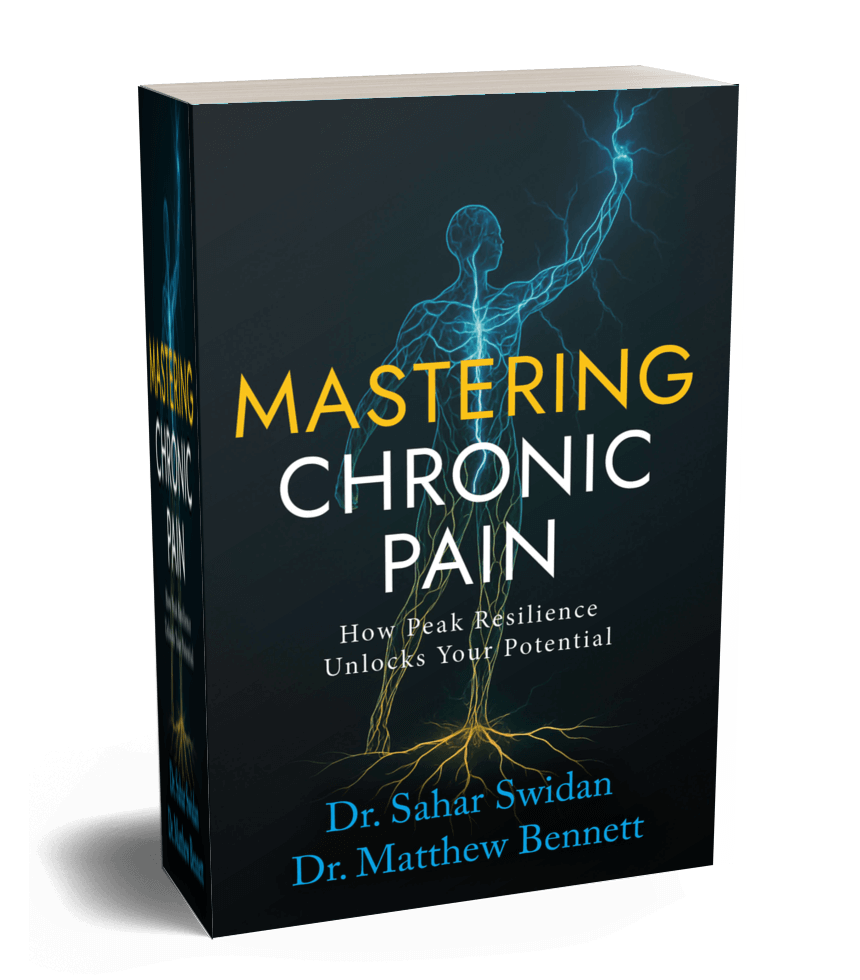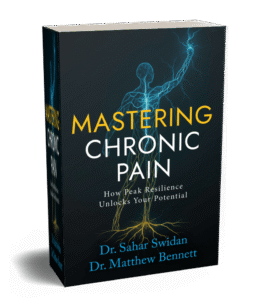Discover practical strategies for developing patience to enhance your mental wellbeing, featuring real-world applications and insights from leading mental health professionals. These evidence-based techniques offer concrete ways to transform moments of frustration into opportunities for growth and healing. Mental health experts share how intentional breathing, strategic pauses, and perspective shifts can build resilience in both professional and personal contexts.
- Reframing Perspective Transforms Professional Growth Journey
- Red Lights Become Opportunities for Reset
- Three Steps to Cultivate Therapeutic Patience
- Small Pauses Create Room Between Stimulus
- Trust the Process for Calm Professional Purpose
- Breath Creates Space During Uncertain Times
- Strategic Pauses Transform Clinical Leadership
- Daily Rituals Protect Mental Clarity
- Remember We All Carry Our Baggage
- Slowing Down Creates Space for Healing
- Patience Strengthens Leadership Through Daily Practice
- Focus on What You Control During Delays
- Building Systems Beats Stressing Over Delays
- Intentional Breathing Defuses Anxiety Reactions
Reframing Perspective Transforms Professional Growth Journey
As a mental health expert, I understand that patience isn’t a passive waiting game but an active practice of emotional regulation. A formative experience for me was during my post-graduate training, where I was trying to master a complex therapeutic modality. My initial impatience was corrosive; every mistake felt like a catastrophic failure. I would compare my slow progress to my peers’ apparent ease, which fueled a harsh internal critic, leading to significant anxiety and impostor syndrome. My mental health suffered as my self-worth became tied to the speed of my learning. The turning point was a conscious shift to practicing patience. I reframed my perspective: this wasn’t a race, but a deep, gradual process of integration. I started celebrating small breakthroughs instead of fixating on the distant goal of mastery. I allowed myself to be a novice, offering myself the same compassion I would a client. This shift was transformative. The anxiety receded, replaced by a sense of curiosity and self-compassion. My learning actually accelerated because my mind was no longer hijacked by stress, and my overall well-being and professional confidence improved immeasurably.
The primary strategy I use to cultivate patience in challenging moments is what I call “expanding the time horizon.” When I feel a surge of impatience—whether stuck in traffic, dealing with a technical glitch, or navigating a difficult conversation—I consciously pause. I take a single, deliberate breath and ask myself three questions: “Will this moment matter in five hours? Will it matter in five days? Will it matter in five years?” This simple act of cognitive reframing instantly widens my perspective beyond the immediate, intense frustration. It de-escalates the emotional urgency by reminding my nervous system that the current situation is temporary and likely insignificant in the grand scheme of my life. This doesn’t dismiss the frustration but contextualizes it, shrinking the problem’s perceived size and expanding my capacity to endure it with grace and a calmer mind. It’s an active mental muscle that, with practice, becomes a powerful tool for maintaining emotional equilibrium.

Red Lights Become Opportunities for Reset
When I’m stopped at a red light, I use it as a cue to practice patience. Instead of gripping the wheel and wishing the light would change faster, I take three slow breaths, making the exhale longer than the inhale and sometimes pausing briefly in between. Over time, this small ritual has shifted how I meet frustration. What used to feel like wasted time now feels like a chance to reset.
This practice might seem simple, but it builds strength for when bigger challenges come along. Patience doesn’t mean pretending everything is fine when it isn’t. It means allowing ourselves to sit with uncomfortable emotions–frustration, fear, anger–without being swept away by them. Feelings we resist tend to persist. When we acknowledge them, perhaps by saying to ourselves, “This is frustrating” or “I feel angry right now,” we create a little more space and clarity.
Acceptance, rather than resistance, is the foundation of patience. From that place of awareness, we can reframe how we see the situation. Instead of “This will make me late,” we might say, “This is a setback, but I can handle it.” That shift doesn’t erase the difficulty, but it changes how we carry it.
Mindfulness-based approaches support this by helping us notice the early warning signs in our bodies–a racing heart, a clenched jaw. If we can catch these cues, we can choose to pause, breathe, and ground ourselves before reacting.
Take the example of being stuck in traffic on the way to an important appointment. Stress rises quickly, and anger feels justified. But using the same practice I’ve built at red lights, I can notice my tension, soften my hands on the steering wheel, and breathe. The traffic doesn’t move any faster, but I arrive calmer and more present.
By weaving mindfulness and acceptance into daily life, even in the smallest of ways, we train ourselves to respond rather than react. Each pause, each mindful breath, strengthens our capacity for patience. It’s a skill–one that grows with practice–and it allows us to meet life’s inevitable challenges with more steadiness, clarity, and compassion.

Three Steps to Cultivate Therapeutic Patience
Practicing patience in challenging situations has improved my mental health and established a critical feedback loop for my clients, creating a mutually reinforcing cycle that increases therapeutic efficacy for them and professional quality of life for me.
Clients often come to psychotherapy already impatient with themselves. They’re frustrated at their seeming inability to break out of self-defeating patterns, to stop thinking or feeling in ways that they’ve judged to be unacceptable, or to make progress in some area of their life. Not only are they troubled by their troubles, once they’ve decided to “do something” about those challenges by coming to therapy, they’re anxious to see progress.
Client impatience can absolutely create a feeling of pressure for therapists, who of course want to be helpful. Transference and counter-transference—in which a client unconsciously projects their feelings, thoughts, and behaviors onto the therapist and vice-versa—is perhaps most ubiquitous when it comes to impatience, because both parties are antsy to see progress. The client wants to feel better and the therapist wants to feel useful.
I use a three-step strategy for cultivating patience in challenging situations:
1. I name the feeling of impatience by saying to myself, “Oh, look at that. I’m feeling impatient!” When you label a feeling, you are creating an important distinction for yourself: I am not my feeling. This frees you to show up in a way that is dictated by what you know is constructive instead of how you feel, but without stuffing the feelings or pretending they aren’t happening.
2. I model empathy towards myself, to generate empathy for my client: “If I feel impatient, how much more agitated and distressed must my client feel? After all, I’m just a witness here… they are the one actually going through it?”
3. I model self-empathy and self-validation for my client, which notably improves my own experience and creates an important distinction from theirs: “You know, I can tell how frustrating this is for you… if I’m feeling it, it must be truly aggravating for you. And that makes sense.”
Modeling an active practice of patience through labeling, empathizing, and validating is a profound strategy for cultivating the feeling of patience in challenging situations. Like many other challenging internal experiences, empathy for our own experience has an immediately rightsizing effect on the most profound challenges to our mental health.

Small Pauses Create Room Between Stimulus
Patience can become challenging when life feels full of demands or when emotions run high. I have often noticed how easy it is to slip into a mindset of wanting everything resolved quickly. For a long time, I thought that pushing through at speed was a strength, but I later realized it often added to my stress instead of easing it.
One experience that changed my relationship with patience came during a demanding stage of my career. I was juggling long hours, study commitments, and personal responsibilities. I noticed that what exhausted me most was not the work itself but the constant thought that I should be getting through it faster. That sense of urgency kept me tense and restless.
I began experimenting with small pauses. Whenever I felt myself rushing, I tried taking a slow breath and reminding myself that not everything needs to be resolved immediately. At first, this felt uncomfortable, but gradually I noticed how much calmer I became. Giving myself permission to slow down meant I made fewer mistakes, related to others with more care, and was less drained by the end of the day.
One strategy I continue to use is reframing time. I remind myself that waiting is not wasted. Allowing more time often helps me see a situation more clearly. For example, in moments of conflict, it is tempting to resolve things straight away, yet stepping back usually allows emotions to settle and perspectives to soften. Approaching the conversation later nearly always leads to a healthier outcome.
Patience, for me, is not about ignoring problems or passively sitting back. It is the practice of creating space between stimulus and response, of giving myself and others a little more room. Over time, this has made a noticeable difference to my mental health. It has lowered my stress, helped me avoid unnecessary conflict, and given me a steadier sense of perspective when life feels demanding.

Trust the Process for Calm Professional Purpose
When I first launched my psychiatry practice, my impatience was my biggest source of stress. I had a clear vision and wanted to see it fully realized immediately. Every day that didn’t meet my ambitious goals felt like a step backward, which created a constant, low-grade anxiety. My mental health notably improved when I made a conscious choice to practice patience—to trust the process and focus on the present. By shifting my energy from worrying about future growth to providing the best possible care to the patients in front of me, the frantic feeling subsided and was replaced by a calm sense of purpose.
The strategy I use to cultivate patience in challenging moments is what I call the “Time-Lapse Technique.” When I feel a surge of frustration or impatience, I pause and mentally fast-forward the clock. I ask myself, “How much will this specific issue matter in one month? In one year? In five years?” Almost every time, the answer is that it will be insignificant. This mental exercise instantly shrinks the emotional size of the problem and breaks the urgency of the moment, allowing me to respond with clarity instead of reacting with stress.

Breath Creates Space During Uncertain Times
After being displaced by Hurricane Helene in September 2024, I felt so impatient to figure out where I was supposed to live next – should I stay in Asheville, North Carolina, or should I move back to where my family is in Los Angeles, California? I wanted certainty right away — a solid plan, a place to root, and a sense of home again. The more I pushed for answers, the more overwhelmed and anxious I felt. What helped me was practicing patience and trying to create spaciousness: allowing myself to not have everything figured out immediately. With time, clarity began to emerge, and I could actually hear and feel what I needed, rather than reacting from a place of panic and pure reactivity.
One simple strategy I leaned on through this time was my breath. Whenever I felt that urgency rising, I’d slow down, bring my attention to my breath, and lengthen my exhales. It reminded me that I didn’t have to make a decision in that exact moment, and that creating space would allow me to move forward with more steadiness and openness.

Strategic Pauses Transform Clinical Leadership
Patience has revolutionized my therapy and trauma work as a leader in mental health. I’ve trained my staff and clients on building patience, proving it’s a trainable skill. When I stepped into the role of Clinical Director — after years as a therapist with support — one thing that stood out to me was the importance of allowing change time to bloom. I was seeing chronic stress and bad decisions being made in the rush to intervene.
STRATEGIC PAUSE PROTOCOLS (waiting 24-48 hours to reply to anything that’s not an actual emergency) have been good for my headspace, decreased my knee-jerk reactions and regurgitated excuses, and has built in that time to think something over. I was less anxious when I didn’t treat every problem as an urgent matter, and my team’s confidence in my leadership increased the more proactive that I was.
A neurological makeover has helped me understand impatience as a reaction against threats. When I feel a surge of stress, I remind myself to take a pause and reflect on the consequences of waiting to decide. I also believe that patience is an opportunity for data collection, transforming delay into helpful research to aid in treatment.

Daily Rituals Protect Mental Clarity
The construction delays at Oakwell during our bootstrapping phase made me feel frustrated every day because I could not control these issues. I replaced my daily tasks with a walk to an antique Japanese tea house which became my destination for that specific morning. The act of watching steam rise from my cup brought me a sense of calmness while I sat there. The experience did not resolve the project delays, but it helped me achieve mental clarity which led to better choices for the future. The change in my speed of work helped protect my health while ensuring the project’s success.
I use the following method to handle stressful situations: I ask myself if the current situation will still be important during the next twelve months. This basic inquiry helps me stop the cycle of intense pressure. The majority of situations appear more significant during the present moment than they actually turn out to be.

Remember We All Carry Our Baggage
I’ve been in plenty of situations where projects got stuck. Not because people weren’t trying, but because everyone was bringing their own baggage to the table. It took me a while to realize that pushing harder doesn’t fix that. What helps is just remembering we’re all human, we all have our own stuff we’re working through. That perspective takes some of the pressure off and makes it a lot easier to be patient while things sort themselves out.
Take a pause. Inhale and exhale. Remember we are all working on other things in life. And giving one another space to be human makes everything a bit easier.

Slowing Down Creates Space for Healing
Practicing patience became essential during my recovery from surgery. I wanted to push through and get back to work, but slowing down allowed me to heal and reduced the stress of feeling behind.
One strategy I use is nervous system regulation: when I feel the urge to act quickly, I pause, breathe, and notice the part of me that’s pushing. That pause creates space to respond with clarity instead of reactivity.

Patience Strengthens Leadership Through Daily Practice
Learning and practicing patience is one of the most valuable lessons I’ve learned personally and as a leader. I recall a tough time when a supplier delay derailed a product launch we had spent months working on and hours building. My first reaction was frustration and to push harder, but I knew that would only increase anxiety without altering the overall situation. Instead, I concentrated on what I could control, particularly reordering timelines, speaking candidly with our team, and assuring partners that we were still progressing. Opting for patience not only helped to alleviate the burden on my mental health of that challenge but also helped me to lead with clarity and calm. This experience has convinced me that patience is not weakness; it’s a conscious and deliberate decision to respect the other person’s well-being and remain in control of yourself in order to solve problems more intelligently.
As I’ve grown older, I’ve realized that patience is something that you have to work on every day and not just in extreme situations. For me, this practice arrives in the form of tiny, well-placed interruptions throughout my day. Before jumping in to face a difficulty, I take a moment to clear my head, be that with some silent walking, stretching, or just sitting and thinking without distractions before making an impulsive decision. They’re brief breaks, yet they insert distance between the stressor and what would otherwise be an impulse response. This practice has made me a stronger leader, but more importantly, it’s made me healthier.
The advice I’d pass on to others is to frame patience in your mind as a skill that can grow just like any other, rather than an abstract quality. Begin by practicing small moments of slowing down, gaining perspective, and deciding how to respond. Those choices accumulate and, with time, contribute to sharper decision-making, healthier relationships, and a more robust mindset.

Focus on What You Control During Delays
I remember waiting months for a business deal to close that kept dragging on with delays. Instead of obsessing over it, I shifted my focus to projects I could control, which eased my stress and kept me productive. That patience paid off—the deal eventually landed, but more importantly, I didn’t burn myself out in the meantime.
One strategy I use to cultivate patience is reframing the delay as “bonus prep time.” By asking myself, “What can I sharpen while I’m waiting?” I turn downtime into growth time, which makes the waiting feel less like wasted energy.

Building Systems Beats Stressing Over Delays
During SourcingXpro’s early years, shipments sometimes got delayed for reasons out of my control—customs checks, factory errors, bad weather. I used to stress over every delay, calling suppliers nonstop. It drained me mentally. One day, after a long week of chasing updates, I realized I wasn’t fixing anything—just exhausting myself. So I started focusing on what I could control: tightening contracts, building stronger supplier checks, and setting clearer timelines with clients. Over time, patience became part of my process, not just a mindset. When you accept that consistency beats control, stress drops fast. Now, patience feels less like waiting and more like trusting the system you’ve built.

Intentional Breathing Defuses Anxiety Reactions
In my experience as someone who suffers from extreme social anxiety, learning to practice patience has significantly improved my mental health. The first step to practicing patience was learning to regulate my emotions and foster better coping skills during stressful situations. Intentional breathing techniques, such as deep breathing, have been instrumental in not only developing patience but controlling emotions. One needs to first notice when emotions are triggered, recognize this moment as a great opportunity to practice patience, take a few deep intentional breaths, and defuse impulsive reactions. Bring awareness to your body, create space for calm, rational reactions which will reinforce patience over time.














